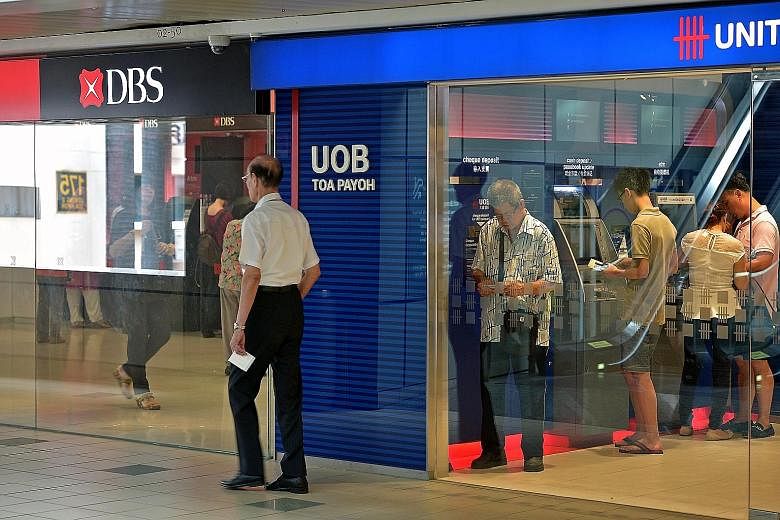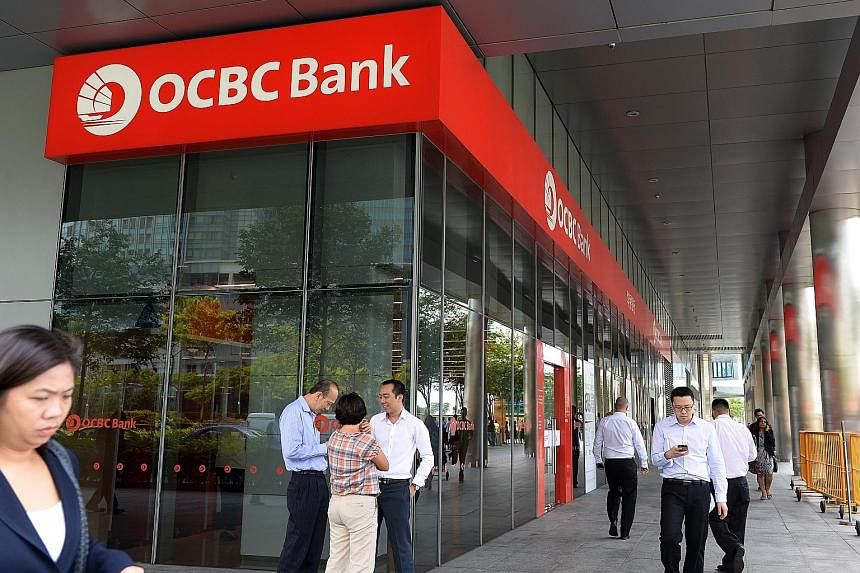The April-to-June quarter has been a muted one for Singapore companies, many of which have had to grit their teeth in order to deliver earnings in the face of challenging business conditions and global economic uncertainties.
Of the 30 firms that make up the Straits Times Index (STI) and of those reporting second-quarter results, 11 turned in lower-than-expected earnings, while eight managed to beat forecasts, based on data compiled by Bloomberg.
Total blue-chip earnings announced so far are about 8 per cent lower than estimates.
The mixed performance by big caps reflects the challenging backdrop since the turn of the year.
At home, companies remain under pressure from labour shortages and slowing economic growth.
Abroad, a sputtering global recovery and a weakening China have eroded demand. Profits have also been hit by a strong Singapore dollar versus several key currencies, including the ringgit and Aussie dollar.
And the second half could prove worse, said DBS Singapore equities research head Janice Chua.
"Macro uncertainties continue to weigh on the outlook for corporate earnings in Singapore. Growth could dip into negative territory, from current estimates of 1 per cent expected for 2015. Consensus has been adjusting earnings forecasts down since the start of the year, with the market expecting earnings growth of 6-8 per cent then."
Below, we look at three key sectors here.
OIL AND GAS
This sector is among those struggling the most as offshore and marine companies remain under pressure from sluggish oil prices.
At Sembcorp Marine, net profit fell to $109.2 million during the quarter, down 17 per cent from last year, while Keppel Corp posted a 2.3 per cent drop to $396.7 million. Outside the STI, Ezion saw net profit shrink 36.3 per cent to US$28.9 million (S$40.6 million) and Ezra suffered a net loss of US$3 million.
Brent futures remained at around US$49 a barrel - half the level seen 12 months ago.
Sembcorp Marine summed up the sector's tough outlook when announcing its second-quarter results late last month.
"The persistently low prices have escalated ongoing cuts in global exploration and production capital expenditure. Some customers are deferring or seeking to defer delivery of rigs ordered because of a lack of charter contracts," it said.
A firm recovery for oil prices is still not in sight, OCBC economist Barnabas Gan cautioned.
He noted that the possibility of the oversupply issue continuing into next year is rising, so bearish sentiments could effectively outweigh any positive cues.
He said: "While we stick to our Brent expectation of US$60 for end-2015, a downside risk to our forecast could exist."
REAL ESTATE
Companies in the property sector continued to be muted in their performance as the local market remained stuck in a down-cycle, largely because of cooling measures by the Government.
Many firms are seeking ways to diversify away from the Singapore residential segment.
For the quarter ended June 30, regional heavyweight CapitaLand reported a 5.8 per cent rise in net profit to $464 million, while City Developments (CDL) saw its figure fall 3.2 per cent to $133.5 million.
Diversification will remain the key growth strategy for the two blue-chip property firms.
CapitaLand will continue to focus on China as the contribution from Singapore weakens.
For CDL, diversification means building up assets in Britain, China and Japan. The company is also weighing whether to convert Nouvel 18 in Singapore into serviced apartments.
As many as 2,099 units were launched in the second quarter, when residential prices dropped for a seventh straight quarter.
Developers with a greater focus on the local residential segment have suffered more. Wing Tai, for instance, reported a 19 per cent drop in net profit to $115.9 million for its fourth quarter ended June 30.
"In the second half of this year, developers will continue to remain watchful and selective in terms of their land-banking activities, and cautious in timing future property launches, given weak market demand," said Ms Chua of DBS.
"We project the top line for developers will decline year on year because of a lack of substantial new launches, as developers draw down on sales locked in previously."
BANKS
Even the three local banks, which are often the best-performing Singapore corporates, could be under some signs of strain.
No doubt, both DBS and OCBC posted fresh records in quarterly net profit - DBS boosted the tally by 15 per cent to $1.12 billion, while OCBC achieved a 14 per cent rise to $1.05 billion.
However, UOB proved to be a surprise when it not only missed earnings forecasts, but posted a 5.7 per cent drop in net profit to $762 million, because of weaker trading and investment income.
All three banks benefited from improved loan spreads in the second quarter, when net interest margins rose because of higher Singapore interbank offered rates (Sibor).
Even so, loan growth showed signs of softening, reflecting the slowdown in regional economies, including key markets where the three banks operate, such as Malaysia, Indonesia and Greater China.
As a result, loans dropped 0.3 per cent quarter on quarter at DBS and 0.5 per cent quarter-on-quarter at UOB. Meanwhile, at OCBC, loan growth was flat compared with the first quarter.
"Given the broad-based weakness in loan demand across the region, loan growth is likely to remain muted even beyond the second half of this year," Credit Suisse research analysts said in a recent note.
"With loan growth likely to be flat in the second half, any increase in credit costs could dampen profits significantly," it said.
Bank earnings could get a boost once the Federal Reserve normalises interest rates in the United States - such events are closely correlated with Sibor movements.
Indeed, the three-month Sibor is now back on an uptrend and is currently staying at around 0.93 per cent, following a softening between April and June.
However, if rates rise, small- to medium-sized enterprises (SMEs) in Singapore are likely to suffer.
With rates set to rise again, local SMEs are viewing their outlook with a high degree of caution, said Mr Kurt Wee, the president of the Association of Small and Medium Enterprises.
"SME earnings were still largely intact in the first half of this year, but higher interest rates, coupled with the regional economic slowdown, could lead to cash flow problems for some," he said.
"Anticipating the challenging conditions ahead, many have already frozen their headcount, starting from around February."
As Singapore companies tackle an uncertain second half, the SME sector is the one that truly needs support and care, Mr Wee stressed.



